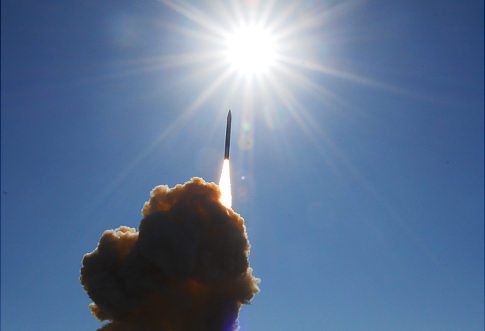The Department of Defense’s (DOD) Missile Defense Agency (MDA) has made some recent progress gaining important knowledge for its Ballistic Missile Defense System (BMDS) by successfully conducting several important tests. In addition, the agency made substantial improvements to the clarity of its cost and schedule baselines since first reporting them in 2010, and declared the first major deployment of U.S. missile defense in Europe operational in December 2011. MDA also took steps to reduce acquisition risk by decreasing the overlap between technology and product development for two of its programs.
MDA faces considerable challenges in executing acquisition programs; strengthening accountability; assessing alternatives before making new investment commitments; developing and deploying U.S. missile defense in Europe and using modeling and simulations to understand capabilities and limitations of the BMDS. The appointment of a new director for MDA provides an opportunity to address these challenges.
More specifically:
- Interceptor production for three of MDA’s systems has been significantly disrupted during the past few years due to high-risk acquisition strategies which have resulted in delaying planned deliveries to the warfighter, raising costs, and disrupting the industrial base. Further, MDA continues to follow high-risk acquisition strategies for other programs. For example, its Targets and Countermeasures program is adding risk to an upcoming complex, costly operational flight test involving multiple MDA systems because it plans to use unproven targets.
- While MDA made substantial improvements to the clarity of its reported cost and schedule baselines, MDA’s estimates are not comprehensive because they do not include costs from military services in reported life-cycle costs for its programs. Instability due to MDA’s frequent adjustments to its acquisition baselines makes assessing progress over time using these baselines extremely difficult and, in many cases, impossible.
- While MDA has conducted some analyses that consider alternatives in selecting which acquisitions to pursue, it did not conduct robust analyses of alternatives for two of its new programs, both of which were recently proposed for cancellation.
- During the past several years, MDA has been responding to a mandate from the President to develop and deploy new missile defense systems in Europe for the defense of Europe and the United States. GAO’s work continues to find that a key challenge facing DOD is to keep individual system acquisitions synchronized with the planned deployment time frames.
- MDA has also struggled for years to develop the tools—the models and simulations—to understand the capabilities and limitations of the individual systems before they are deployed. While MDA recently committed to a new approach that could enable them to credibly model individual programs and system-level BMDS performance, warfighters will not benefit from this effort until after the first two of the currently planned three phases for U.S. missile defense in Europe have been deployed in 2011 and 2015 respectively.
Testimony by Cristina T. Chaplain, director, acquisition and sourcing management, before the Subcommittee on Strategic Forces, Senate Committee on Armed Services.
[Download not found]










